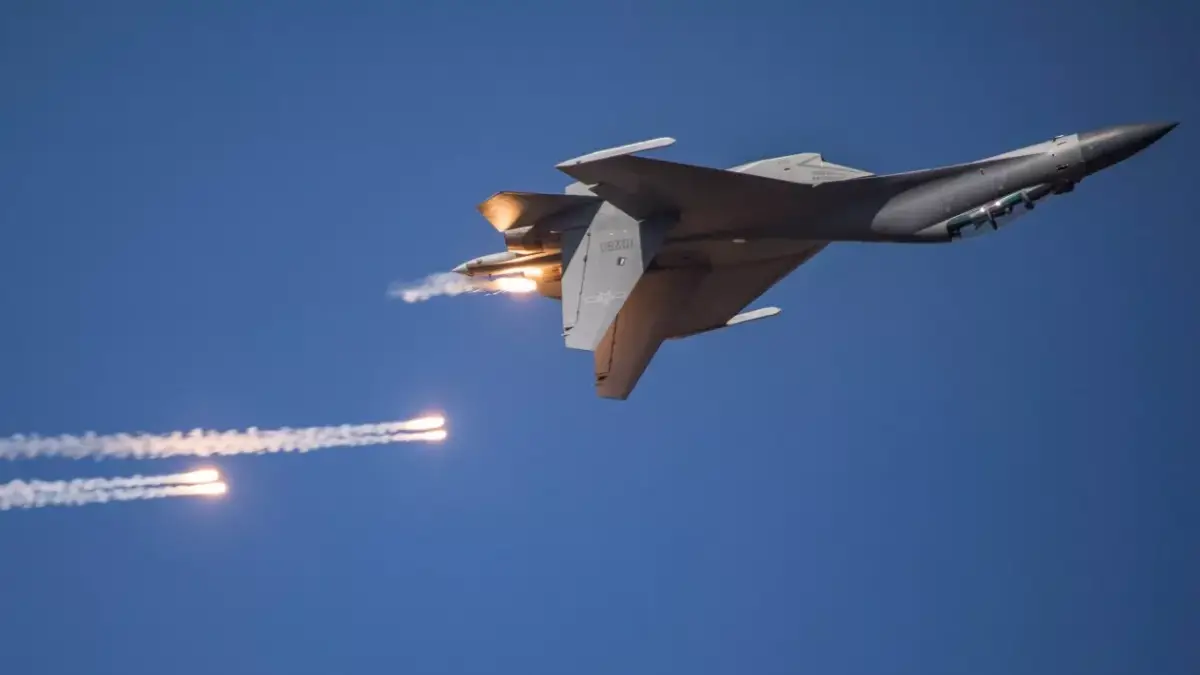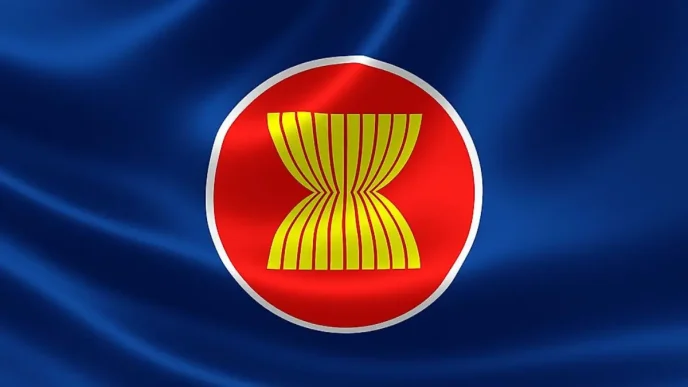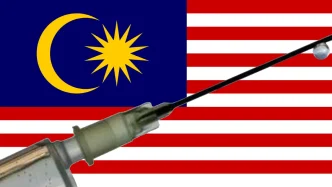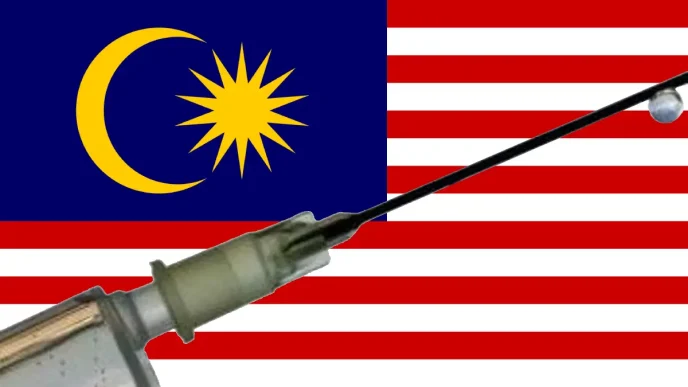In a stark display of escalating tensions in the South China Sea, a Chinese fighter jet intercepted a Philippine aircraft carrying journalists during a patrol flight over the disputed Scarborough Shoal on August 13. The incident, lasting 20 minutes, saw the Chinese jet maneuver dangerously close to the small Cessna Caravan turboprop, at one point coming within 200 feet (61 meters), according to Philippine Coast Guard (PCG) spokesperson Commodore Jay Tarriela. This encounter, coupled with recent collisions involving Chinese vessels in the area, underscores the volatile standoff between Manila and Beijing over this resource-rich atoll.
This is not the first time the Chinese have behaved aggressively in the region. In 2024, a Chinese warplane deployed flares along an Australian navy helicopter flightpath, a dangerous act that forced the pilot to take evasive action. In 2001, a mid-air collision occurred between a Chinese fighter jet and an U.S. navy EP-3 signals intelligence aircraft, off the Chinese island of Hainan. The Americans said that the Chinese fighter jet got so close to them that they could read the Chinese pilot’s handwritten message.
A Dangerous Mid-Air Encounter
The Philippine aircraft, operated by the PCG, was conducting a routine patrol over Scarborough Shoal, located 200 kilometers (124 miles) off the Philippine coast and within its exclusive economic zone (EEZ). Aboard were journalists, including a Reuters correspondent, who witnessed the Chinese fighter jet’s aggressive maneuvers. The jet positioned itself behind, above, and alongside the turboprop, creating a tense situation in the skies above the disputed waters. From the cockpit, radio demands from one of two Chinese navy ships below could be heard, ordering the Philippine plane to leave immediately.
Commodore Tarriela, speaking at a press conference following the incident, described the encounter as a clear interception by the Chinese military. This mid-air confrontation is the latest in a series of aggressive actions by Beijing in the South China Sea, where it claims almost the entire region through its controversial Nine-Dash line—a claim invalidated by a 2016 arbitration ruling at the Permanent Court of Arbitration in The Hague. China, which rejects the ruling, has maintained a near-constant presence at Scarborough Shoal since seizing control in 2012, deploying coast guard vessels and what the PCG identifies as maritime militia ships.
Recent Collisions and Supply Blockades
The interception follows a separate incident just two days earlier on August 11, when the PCG dispatched three vessels to deliver supplies to Filipino fishermen at the shoal. According to Philippine authorities, Chinese vessels attempted to block the mission, resulting in what they described as a hazardous intervention. This led to the first known collision between two Chinese ships in the area, though Beijing has not confirmed any injuries or damage. Manila’s offer of medical and rescue assistance was reportedly ignored by Chinese authorities.
On the same day as the interception, two US warships—the littoral combat ship USS Cincinnati and the destroyer USS Higgins—were observed approximately 30 nautical miles from the shoal. China’s military claimed it had driven away the US destroyer for entering the area without permission, while Washington countered that its vessels were conducting lawful freedom of navigation operations. The presence of US forces in the region adds another layer of complexity to an already fraught situation, as the United States has repeatedly condemned Beijing’s actions in the South China Sea as reckless.
Strategic and Economic Stakes at Scarborough Shoal
Scarborough Shoal, known as Bajo de Masinloc in the Philippines and Huangyan Island in China, holds significant strategic and economic value. Its rich fishing grounds and sheltered lagoon make it a vital resource for Filipino fishermen, many of whom rely on the area for their livelihoods. The shoal’s location within the Philippines’ EEZ, as defined by the United Nations Convention on the Law of the Sea (UNCLOS), places it under Manila’s legal jurisdiction—a position reinforced by the 2016 arbitration ruling that deemed China’s blockade of the shoal unlawful.
Despite this legal backing, China’s de facto control of the area since 2012 has prevented Filipino fishermen from accessing the lagoon, often under the watch of Chinese coast guard and militia vessels. During the August 13 patrol flight, at least four Chinese coast guard ships and several suspected militia vessels were visible in the vicinity, according to the PCG. This persistent presence has fueled accusations from Manila that Beijing is using coercive tactics to assert dominance over disputed territories, not just at Scarborough Shoal but across the broader South China Sea.
Regional and International Implications
The South China Sea remains one of the world’s most contested maritime regions, with overlapping claims from multiple countries, including Vietnam, Malaysia, Brunei, and Taiwan, alongside China and the Philippines. Beijing’s expansive claims, marked by the nine-dash line, have been a source of friction for decades, leading to frequent confrontations with neighboring states. The area is not only a critical fishing zone but also a major global trade route, with trillions of dollars in commerce passing through its waters annually. Additionally, the seabed is believed to hold substantial untapped oil and gas reserves, further raising the stakes for claimant states.
For the Philippines, the incidents at Scarborough Shoal are a test of its resolve to defend its sovereign rights against a far more powerful neighbor. Under President Ferdinand Marcos Jr., Manila has taken a firmer stance, strengthening defense ties with the United States and other allies while pursuing diplomatic channels to de-escalate tensions. The presence of US warships near the shoal during the latest incident highlights Washington’s commitment to supporting its treaty ally, the Philippines, under the 1951 Mutual Defense Treaty. This treaty obliges the US to assist in the event of an armed attack on Philippine forces or territory, though the exact scope of this commitment in disputed waters remains a subject of debate.
Internationally, the South China Sea disputes have drawn condemnation of China’s actions from various quarters. The United States, alongside allies like Japan and Australia, has conducted joint military exercises in the region to counter Beijing’s assertiveness. The European Union and other global actors have also called for adherence to international law, particularly UNCLOS, in resolving maritime disputes. Yet, China’s rejection of the 2016 ruling and its continued militarization of artificial islands in the Spratly Islands—another contested area—signal that Beijing is unlikely to back down without significant diplomatic or economic pressure.
Domestic Reactions and the Human Cost
In the Philippines, the repeated confrontations at Scarborough Shoal have sparked public outrage and calls for stronger government action. Fishermen, who have borne the brunt of China’s blockade, often return empty-handed or face harassment from Chinese vessels. The shoal’s lagoon, once a safe haven during storms, is now largely inaccessible to them, threatening their livelihoods and the food security of coastal communities. Advocacy groups and local leaders have urged Manila to bolster naval patrols and seek greater international support to protect Filipino interests in the area.
At the governmental level, the Philippines has consistently lodged diplomatic protests against China’s actions, though responses from Beijing remain limited. Neither China’s defense ministry nor its embassy in Manila has commented on the August 13 interception or the earlier collision. On August 11, China’s coast guard issued a statement claiming it had taken necessary measures to expel Philippine vessels from waters around the shoal, framing its actions as a defense of territorial integrity.
Looking Ahead: A Precarious Balance
The interception of a Philippine aircraft by a Chinese fighter jet over Scarborough Shoal marks a dangerous escalation in an already tense region. While no physical harm resulted from the mid-air encounter, the incident serves as a reminder of how quickly such confrontations could spiral into broader conflict. With both sides unwilling to cede ground—Manila backed by international law and Beijing by military might—the South China Sea remains a flashpoint for potential miscalculation.
As the Philippines continues to assert its rights through patrols and supply missions, and as China doubles down on its territorial claims, the role of external powers like the United States will be crucial in shaping the trajectory of this dispute. For now, the fishermen of Scarborough Shoal and the broader regional community watch anxiously, caught in a geopolitical struggle far beyond their control. How diplomacy and deterrence will balance in the coming months remains an open question, with the risk of further escalation ever-present on the horizon.















